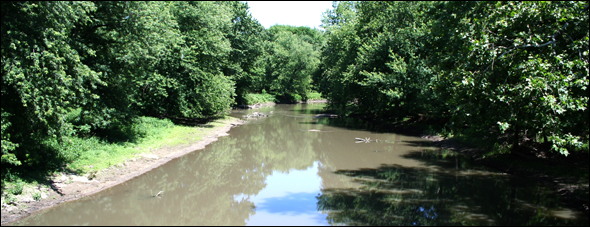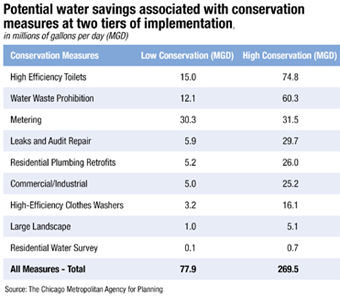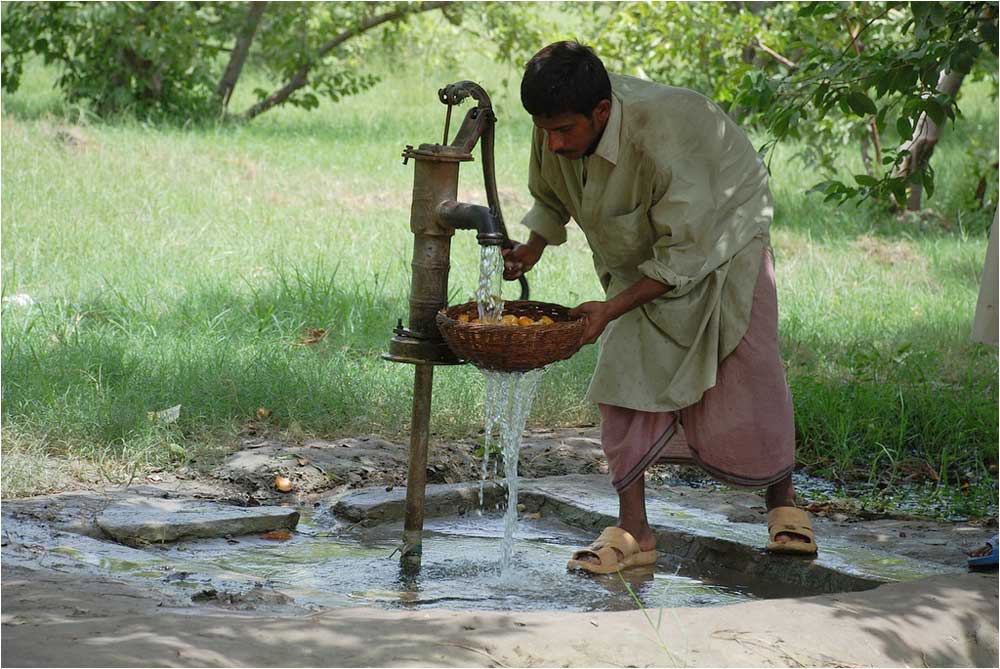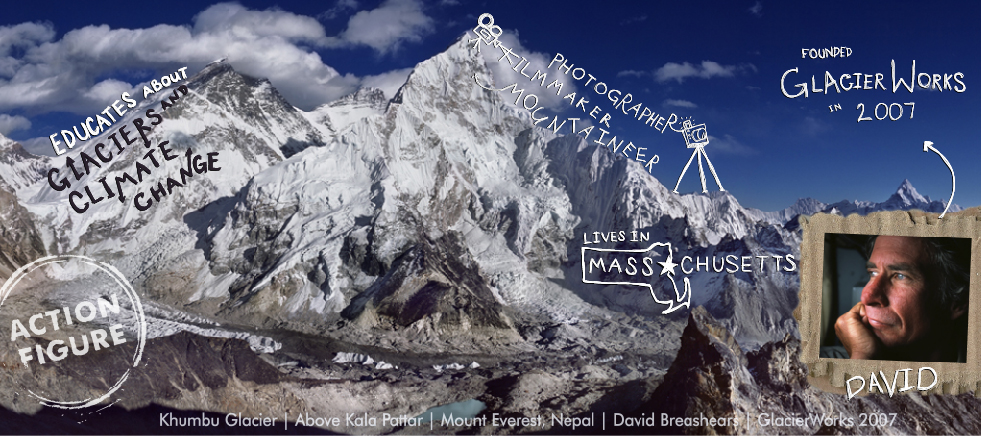New Plan Approved to Protect Chicagoland Water
Plan includes recommendations for new water conservation and protection measures, along with better measurement of the region’s water supplies.

By Steve Kellman
Circle of Blue
A three-year effort to develop a landmark water plan for the greater Chicago region was unanimously approved by political and environmental stakeholders Tuesday.
Now comes the hard part.
The Northeastern Illinois Regional Water Supply/Demand Plan is designed to help the 11-county region continue meeting the water needs of its surging population. Over the next 40 years, the region’s population is expected to grow from 8.4 to 12.1 million residents.
The plan was developed by the Regional Water Supply Planning Group of the Chicago Metropolitan Agency for Planning, or CMAP, and was commissioned by the Illinois Department of Natural Resources. It recommends hundreds of ways for local governments, businesses and residents to conserve and protect the region’s existing water supplies, including Lake Michigan, local rivers like the Fox and Kankakee, as well as groundwater.
“This is a pilot, part of a statewide program that we hope will move forward to other parts of the state,” Randy Blankenhorn, CMAP’s executive director, told Circle of Blue. “Those other parts of Illinois and other areas in the Midwest obviously are watching what’s happening here and how we were able to take a plan like ours and move towards implementation.”
One key goal of the plan is to do a better job of measuring the region’s surface and groundwater, said Tim Loftus, project director for the planning group.
“You can’t manage what you don’t measure,” he said.
To that end, the plan asks that the state provide the Illinois Department of Natural Resources with enough funding to conduct impact analysis of new withdrawals on groundwater supplies that will support the Illinois Water Inventory Program, which determines how much water is used in the state. Another recommendation encourages greater cooperation between the government and CMAP to foster better regional data collection in order “to help the region understand the trends and where water’s being used and where opportunities are to achieve greater savings,” Loftus said.
Another key goal is to protect the quality of the region’s surface and groundwater supplies. Loftus noted that the plan contains several suggested measures in that regard that are directed at municipal governments, wastewater treatment plants and agricultural users.

“Those are the sources that are largely responsible for both point and non-point pollution, so we have made recommendations in there to mitigate existing impairments as well as protect the resource from future impairments,” he said.
The recommendations include reducing the use of road salt on the region’s highways through the adoption of “sensible salting” practices that have been recommended by the Salt Institute, a non-profit salt industry trade association. This would help address “the emerging issue of contamination by road salts,” Loftus said.
“Of course we’re also protecting groundwater by just becoming more conservative and efficient with its use, so that there’s adequate groundwater available to sustain the aquatic ecosystems like wetlands and streams that require shallow groundwater,” he said.
Bonnie Thomson Carter, who chaired the planning group, also serves as a Lake County Board member and president of the Lake County Forest Preserves. She told Circle of Blue that the plan had input from an “extremely diverse” group. The next step will be to encourage local governments to adopt the plan at the local level, Carter said.
“Being an elected official outside of this role, I think the intention of many elected officials and the stakeholder groups is to talk the plan up, to integrate it into our zoning and our comprehensive plans and our watershed plans, and to move the effort into getting groups together to address theses water-related issues outside of our boundaries,” she said.
Underlying the discussions was the concept of water as a public trust, a legal principle that dates back to ancient Roman times. The public trust doctrine states that certain resources, like water, are preserved for public use, and that the government must maintain them for that use.
“I wouldn’t say it was an explicit point of discussion,” Loftus said, “but I think implied in the executive order and the planning process and the plan itself is that it is a public trust, and that all of us that have some role in managing the resource need to step up and increase our stewardship of that resource.”
See previous Circle of Blue coverage: Protecting the Future of Chicagoland’s Drinking Water
Read More: CMAP Regional Water Supply Study








well glad to hear that people are working hand in hand and not arguing about water. This should be the case in other states. instead of dispute, why not work together to make things better for everybody.
“Bonnie Thomson Carter, who chaired the planning group, also serves as a Lake County Board member and president of the Lake County Forest Preserves. She told Circle of Blue that the plan had input from an “extremely diverse” group. The next step will be to encourage local governments to adopt the plan at the local level, Carter said. “Being an elected official outside of this role, I think the intention of many elected officials and the stakeholder groups is to talk the plan up, to integrate it into our zoning and our comprehensive plans and our watershed plans, and to move the effort into getting groups together to address theses water-related issues outside of our boundaries,” she said.
*****
Water, zoning, and outside of our boundaries……..
People should understand this politician can not be trusted. Bonnie Carter lied to area villages in Lake County claiming they could adopt special regulations over water beyond village corporate borders via misuse of state statute 65 ILCS 5/7-4-4-4, contrary to limitations already placed upon the villages outlined in 65 ILCS 5/11-13-1, forcing senseless litigation. State legislators stepped in to stop the waste and adopted clarification bill HB3441 in August 2008 (95-0852), clarifying villages attempting to adopt special regulations beyond borders over water was in fact an illegal form of government in Illinois.
http://www.ilga.gov/legislation/BillStatus.asp?DocNum=3441&GAID=9&DocTypeID=HB&LegId=32312&SessionID=51&GA=95
Trust this politician as far as you can throw her, including when it comes to water issues and zoning.
Here is the link to Bonnie Carter’s pitch to the Village of Round Lake on 9/6/05. http://www.eroundlake.com/audio/2005-09-06.mp3
1 week after that, she made the same pitch to the Village of Fox Lake.
Minutes are also available from both villages.
BTW Bonnie Carter gave no prior notification to the private lake’s owners. Carter attempted this circumvented, zoning attempt covertly. If someone was pursuing any agenda, why would they need to do it covertly?